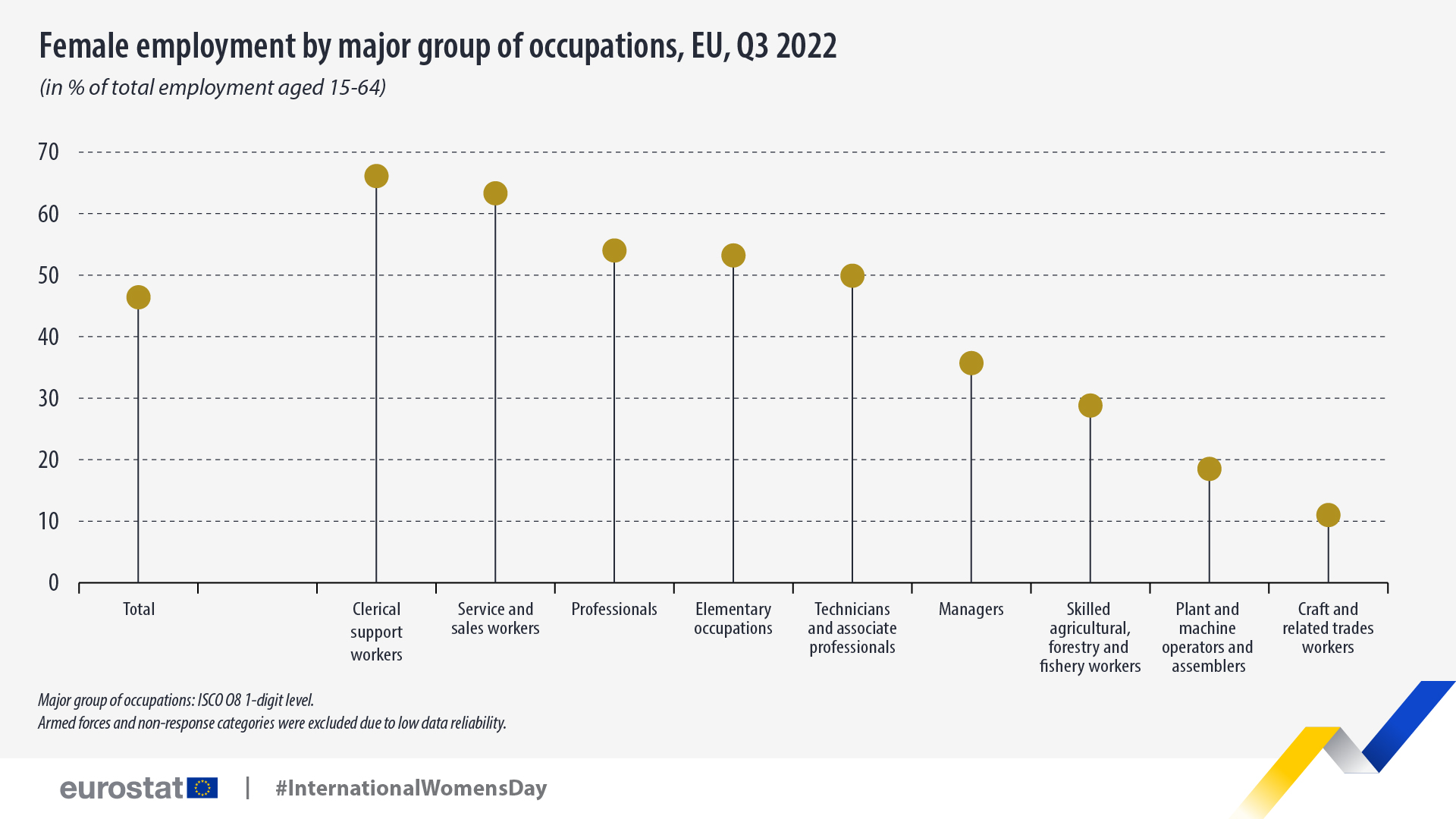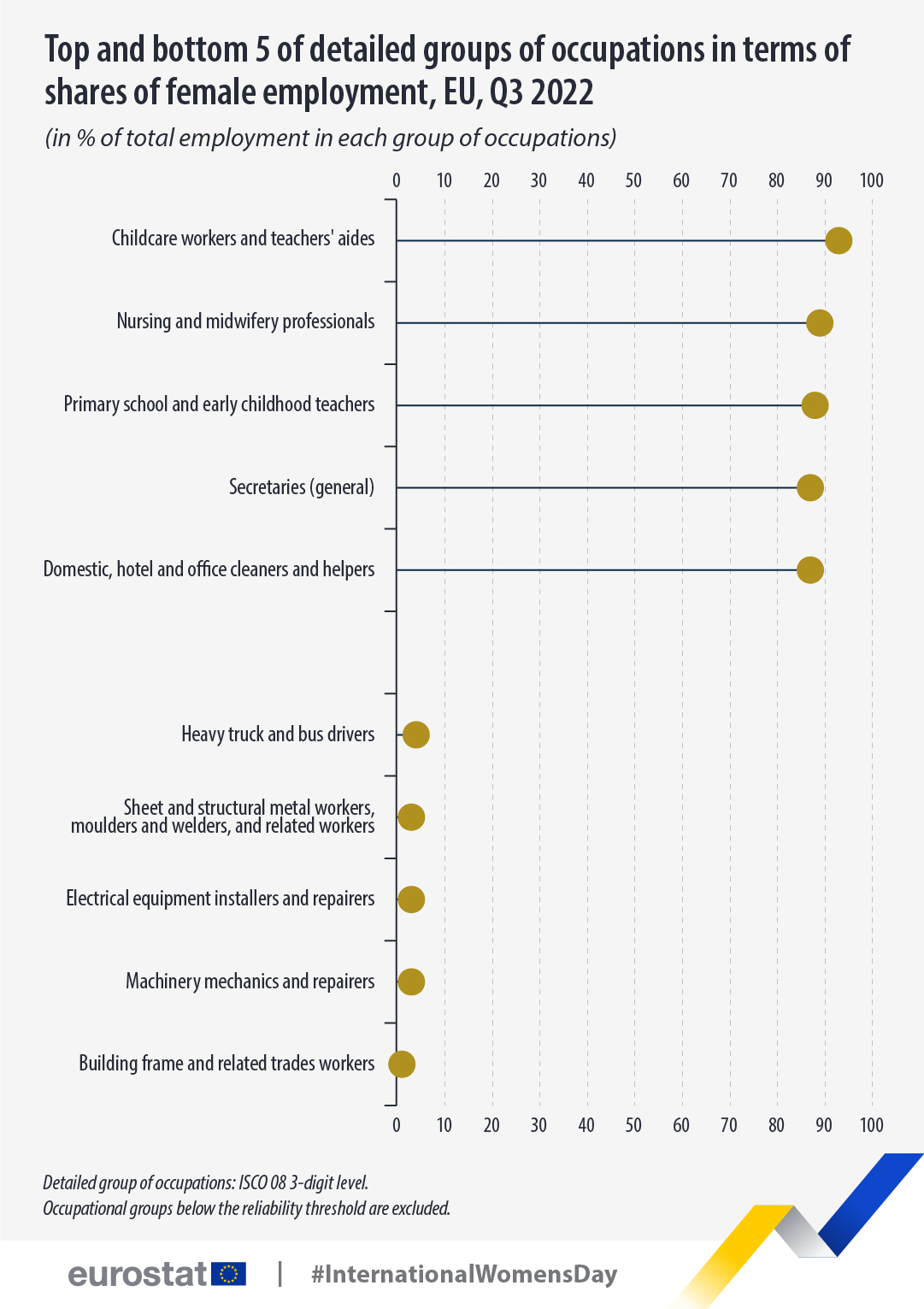Jobs with the highest shares of women in Q3 2022

In the third quarter of 2022, in the EU, the majority of employed people aged 15-64 years were men (54% men compared with 46% women). However, in terms of occupations (according to ISCO), there were more female clerical support workers (66% of total people employed aged 15-64 in this occupation), female service and sales workers (63%), female professionals e.g. scientists, teachers (54%) and women in elementary occupations (53%). At the other end of the scale, women made up less than a fifth of people employed as craft and related trades workers (11%) and plant and machine operators and assemblers (19%).
This article is part of a series of articles published to mark International Women’s Day.
Source data: LFS ad-hoc extraction
On a more detailed level, women in the EU made up the vast majority of employed people among childcare workers and teachers' aides (93% of total people employed in this occupation in Q3 2022), nursing and midwifery professionals (89%) and primary school and early childhood teachers (88%).
Source data: LFS ad-hoc extraction
Meanwhile, women were a low minority among building frame and related trades workers (1% of total people employed in this occupation in Q3 2022), machinery mechanics and repairers, and electrical equipment installers and repairers (both 3%).
Would you like to know more?
On Monday, Eurostat hosted a webinar on women in science, technology and research. You can visit the webinar’s page and watch the recording of the live event.
Leading up to this day, Eurostat published several articles on gender that might help you learn about this issue or get an overall view of the present situation:
For more information
- Statistics Explained article on gender statistics
- Database on gender equality
- Statistics 4 Beginners on the labour market
- Thematic section on employment and unemployment
- Database on employment and unemployment
Methodological notes:
- Female employment by major group of occupations refers to ISCO-08 1-digit level. Armed forces and non-response categories were excluded due to low data reliability.
- Top and bottom 5 of detailed groups of occupations with the highest and lowest shares of female employment refer to ISCO-08 3-digit level. Occupational groups below the reliability threshold are excluded.
If you have any queries, please visit our contact us page.


